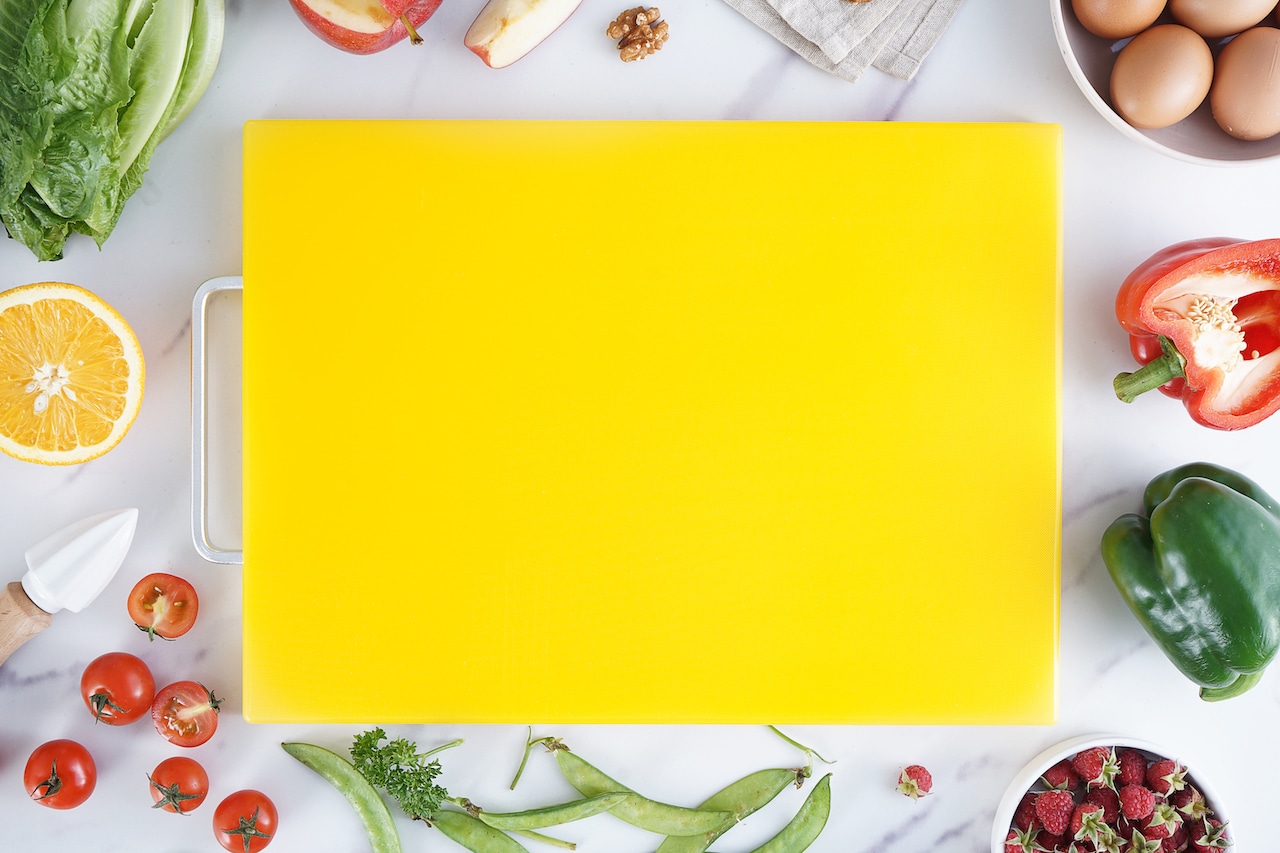Knowing how to clean a cutting board properly is necessary if you want to maintain hygienic conditions during food preparation. Today’s blog will center on what needs to be done to maintain the kitchen’s best conditions for the clean preparation of ingredients for cooking.
How to Clean a Cutting Board
How do you clean a plastic cutting board?
Plastic cutting boards, depending on their make, can serve for years or break in a few months. Hopefully, the one you have at home is of a higher quality and doesn’t have too much surface damage. Surface damage on plastic boards can be problematic as bits of food and bacteria can live in the knife damage areas of the board.
Get an average level of hygiene with your plastic cutting boards is to place them in the dishwasher safely. Since it’s made of plastic, the dishwasher should be no problem for it. Remember always to use the hot cycle when there are cutting boards included as the hot water can help remove and kill human pathogens.
Washing with hot water can disinfect boards continually. And while deep disinfection is recommended, washing with hot water can reduce the chances of large quantities of bacteria forming on the surface of the board.
Another golden tip for cleaning plastic cutting boards is you should always try to scrub them as much as possible. You can scrub a plastic surface by using a brush or a heavy-duty scouring pad. The extra scrubbing does away with the bits of food that are hard to spot with the naked eyes but are still there, nonetheless.
Some experts recommend that when the board is particularly aged, cleaning with a brush becomes essential. Then, it’s no longer feasible to use a scouring pad. By their design alone, scouring pads will not reach the deeper ingresses on the surface of the plastic board. The ingresses or cavities will deepen over time. This increases the likelihood of bacterial contamination originating from leftover food.
How can I make my cutting board white again?
Over time, food stains can make white plastic cutting boards look dirty. While the food pigments are harmless, their presence indicates that you may have to clean your plastic cutting board more deeply. We suggest washing your cutting board first with hot water and dish soap. Rinse out the soap and proceed with soaking the board with baking soda paste.
Create some baking soda paste by combining one tablespoon of baking soda, one teaspoon of salt, and just a dash of water (also about one teaspoon). Spread this paste across your plastic cutting board, ensuring you hit the areas with the knife damage. Let baking soda paste work on the board for half an hour. Scrub it with a brush afterward. This should remove most of the old food pigments stuck to the surface of the board. You should be able to get a whiter-looking plastic board after.
With plastic cutting boards vs. wooden cutting boards, which is one is easier to clean?
Plastic cutting boards are considered lower maintenance than wooden boards that can warp and crack if they are not maintained properly. Both have advantages and disadvantages. However, in the end, it’s how you care for your boards that will spell the difference between a well-maintained board and a dirty one.
How Do You Disinfect a Wooden Cutting Board?
If you clean and take care of wooden cutting boards, they can last for many years. They aren’t the friendliest cutting boards to work with, but they have a spot in every kitchen. The big difference between wooden cutting boards and plastic cutting boards is the quality of their surface. Wood is a porous material, and no matter what kind of wood was used, they’re going to absorb some of the moisture on the surface.
The proper cleansing of wooden cutting boards ensures that the boards will have a longer service life. There is a risk of getting a foodborne illness from using a porous material for a cutting board is reduced drastically. Cleaning cutting boards is of paramount concern in every kitchen. However, if you truly need a dishwasher safe cutting board, we recommend getting a plastic cutting board instead as this requires less maintenance, overall.
How do you clean a wooden cutting board with vinegar?
This is probably the simplest way to disinfect a wooden cutting board without using bleach. It doesn’t smell the best, but it will take care of any bacteria on your cutting board. But is it effective? Our answer is yes, it is effective. Research shows that vinegar, in general, has a heightened capacity to kill many common bacterial strains that cause foodborne illness.
ACD and white vinegar can be used to clean and disinfect wooden cutting boards. Get a cup or so of your choice of vinegar and pour it all over your cutting board. Allow the vinegar to be absorbed by the cutting board. Let the vinegar stand for fifteen minutes or more. After disinfecting, wash your wooden cutting board with hot water and some soap to get rid of vinegar residues.
Wipe your wooden cutting board dry with some paper towels and allow to air-dry. You can apply some oil to the wood after it has dried. Allow the oil to work on the wooden cutting board overnight. Seasoning after a deep cleaning and disinfection is highly recommended so your wooden cutting board will become as good as new.
Do not use this method for boards used mainly for slicing meat. Use it only for boards that are used for vegetables and fruit. If you want to disinfect a board used for meat, poultry, and seafood, you need to use a bleach solution instead. Bleach is powerful enough to kill a lot of pathogens that will cause harm if ingested. It’s a surer choice for boards that have gone through a lot of possible cross-contamination over months of use.

